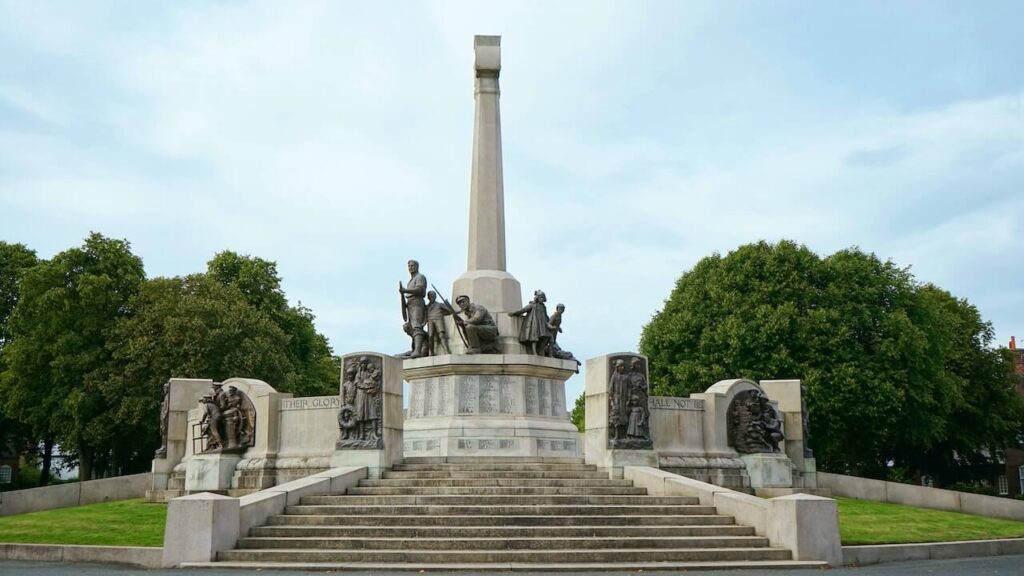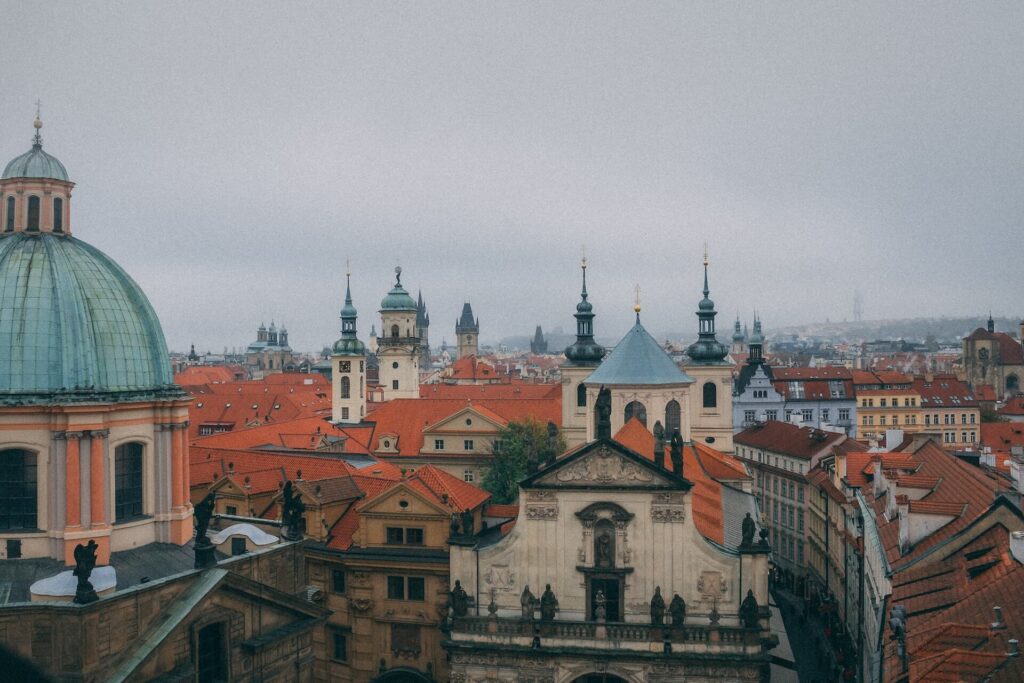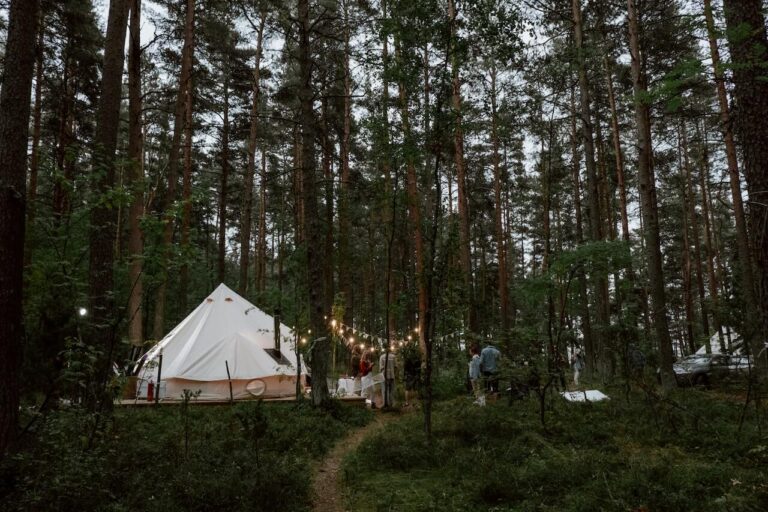
Introduction
Definition of dark tourism:
Dark tourism refers to travel to places that are associated with death, tragedy, and suffering. This type of tourism can include visiting sites of genocide, war memorials, natural disaster sites, prisons, asylums, and other places with a history of violence or trauma.
The term “dark tourism” was coined in the late 1990s by British researchers John Lennon and Malcolm Foley, who were exploring the motivations behind tourism to places associated with death and disaster.
Brief history of dark tourism:
While the term “dark tourism” may be relatively new, the phenomenon itself has been around for centuries. For example, in ancient Rome, tourists would flock to the Colosseum to witness gladiator battles and public executions.
Similarly, pilgrims have long visited sites associated with martyrdom, such as the catacombs of Rome. However, it was not until the 20th century that dark tourism began to emerge as a distinct form of travel, with sites such as Auschwitz and Hiroshima becoming popular destinations for those interested in learning about the history of violence and trauma.
Today, dark tourism is a thriving industry, with millions of people visiting sites associated with death and tragedy each year.

Types of Dark Tourism
Dark tourism is a diverse field that encompasses a wide range of sites and attractions. Here are six examples:
Genocide sites:
Genocide sites are among the most sobering destinations for dark tourism. These sites typically commemorate the mass murder of a specific group of people, and often include museums, memorials, and other educational exhibits. Examples include the Killing Fields in Cambodia, the Srebrenica Memorial in Bosnia and Herzegovina, and the Holocaust Memorial in Berlin.
Visiting these sites can be emotionally challenging, but also provide an opportunity for reflection and learning about the atrocities that have occurred in human history.
War memorials:
War memorials are another common form of dark tourism, with sites such as the Vietnam War Memorial in Washington, D.C., and the Peace Memorial Park in Hiroshima, Japan, drawing millions of visitors each year. These memorials serve as reminders of the human cost of war and provide a space for reflection and remembrance. Many war memorials also feature interactive exhibits that allow visitors to learn more about the specific conflicts they commemorate.
Catacombs and crypts:
Catacombs and crypts are underground burial sites that have become popular destinations for dark tourism. Examples include the Paris Catacombs and the Capuchin Crypt in Rome. These sites are often decorated with the bones and skulls of the deceased, making them both eerie and captivating to visitors. In addition to their historical significance, catacombs and crypts also offer a glimpse into the cultural attitudes towards death and burial throughout history.
Sites of natural disasters:
While dark tourism is often associated with human-caused tragedies, sites of natural disasters can also draw visitors. Examples include the Chernobyl Exclusion Zone in Ukraine and Pompeii in Italy, which were both destroyed by natural disasters (a nuclear meltdown and a volcanic eruption, respectively). These sites offer visitors a chance to witness the destructive power of nature and the impact it can have on human civilization. Some sites of natural disasters also offer opportunities for adventure tourism, such as hiking to the summit of a volcano or exploring a ghost town.
Haunted places:
Many people are intrigued by the paranormal and seek out haunted places to experience ghostly encounters. Examples include the Tower of London, which is said to be haunted by the ghosts of former prisoners, and the Myrtles Plantation in Louisiana, which is rumored to be one of the most haunted houses in America. While the evidence for paranormal activity is often anecdotal at best, the stories and legends surrounding these sites continue to draw visitors.
Prisons and asylums:
Sites associated with incarceration and mental illness are also popular destinations for dark tourism. Examples include Alcatraz Island in California, which was once a federal prison, and the Trans-Allegheny Lunatic Asylum in West Virginia, which housed patients with mental illness for over a century. These sites offer visitors a chance to learn about the history of criminal justice and mental healthcare, as well as the social and political factors that have influenced these institutions throughout history.
Overall, the types of dark tourism are diverse and multifaceted, offering visitors opportunities to learn about history, culture, and society through a lens of tragedy and trauma. While these sites can be emotionally challenging, they also provide important opportunities for education, reflection, and empathy.

10 popular destinations for dark tourism
Here are ten of the most popular destinations for dark tourism:
1. Auschwitz-Birkenau, Poland: Auschwitz-Birkenau was a Nazi concentration camp during World War II. Today, it is a museum and memorial, serving as a reminder of the atrocities committed by the Nazi regime. Visitors can tour the camp, view exhibits, and learn about the experiences of prisoners who were held there. The museum also offers educational programs and opportunities to speak with survivors.
2. Hiroshima Peace Memorial Park, Japan: The Hiroshima Peace Memorial Park is a somber tribute to the devastation caused by the atomic bomb that was dropped on the city in 1945. The park features several memorials, including the Peace Memorial Museum and the Atomic Bomb Dome, which is a preserved building that was near the epicenter of the explosion. Visitors can learn about the history of the bombing and its aftermath, as well as the efforts to promote peace and nuclear disarmament.
3. Chernobyl, Ukraine: The Chernobyl disaster was a nuclear accident that occurred in 1986. Today, visitors can take guided tours of the exclusion zone surrounding the site, which includes the abandoned city of Pripyat. Tourists can view the reactor site, learn about the causes and consequences of the disaster, and see how the area has been affected by the radiation.
4. Tuol Sleng Genocide Museum, Cambodia: Tuol Sleng was a former prison used by the Khmer Rouge regime during the Cambodian genocide. Today, it is a museum that serves as a reminder of the atrocities committed during this period. Visitors can tour the prison, view exhibits, and learn about the experiences of prisoners who were held there. The museum also offers opportunities to speak with survivors.
5. Pompeii, Italy: Pompeii was a Roman city that was buried by the eruption of Mount Vesuvius in 79 AD. Today, visitors can tour the archaeological site, view the preserved ruins of buildings, and learn about life in ancient Rome. While not traditionally considered a dark tourism site, the tragedy of the eruption and the preserved remains of the city make it a compelling destination for many visitors.
6. The Killing Fields, Cambodia: The Killing Fields are a series of mass graves where thousands of Cambodians were executed and buried during the Khmer Rouge regime. Today, the site serves as a memorial and museum, providing a sobering reminder of the atrocities committed during this period. Visitors can tour the site, view exhibits, and learn about the experiences of those who were killed.
7. Ground Zero, USA: Ground Zero is the site of the 9/11 terrorist attacks in New York City. Today, the site includes the National September 11 Memorial and Museum, which serves as a tribute to the victims and a reminder of the events that took place. Visitors can view the memorial pools, which feature the names of those who were killed, as well as view exhibits and artifacts related to the attacks.
8. Alcatraz Island, USA: Alcatraz Island was a high-security prison that housed some of America’s most notorious criminals. Today, it is a museum and tourist attraction that offers guided tours of the prison and the island. Visitors can learn about the history of the prison, view exhibits, and see the cells where prisoners were held.
9. The Catacombs of Paris, France: The Catacombs of Paris are an underground network of tunnels and chambers that contain the remains of millions of people. The catacombs were originally created in the 18th century as a solution to overcrowding in Paris cemeteries. Today, visitors can tour the catacombs and view the bones and skulls that are arranged in elaborate patterns.
10. The Tower of London, UK: The Tower of London is a historic castle located in central London, known for its dark and bloody past. It was used as a royal palace, prison, and execution site, with many famous figures being held and executed there, including Anne Boleyn and Lady Jane Grey. Visitors can take guided tours and see the Crown Jewels, as well as the famous ravens that are said to protect the tower. The Tower of London is also believed to be haunted, adding to its dark allure.

The Psychology Behind Dark Tourism
Dark tourism is a complex phenomenon that can be shaped by a variety of psychological factors. Here are three key elements:
The appeal of darkness:
One reason that people are drawn to dark tourism is the inherent appeal of darkness itself. Darkness can be intriguing, mysterious, and even thrilling, and many dark tourism sites capitalize on this allure by creating an atmosphere of darkness and mystery. For example, catacombs and crypts are often dimly lit and filled with the eerie sound of echoing footsteps, while haunted houses use strobe lights, fog machines, and other effects to create an atmosphere of terror and uncertainty.
The fascination with death and tragedy:
Another key factor that draws people to dark tourism is a fascination with death and tragedy. Many people are naturally curious about the darker side of human experience and seek out sites and experiences that offer a glimpse into the unknown or the taboo. This fascination with death and tragedy can be seen in the popularity of true crime podcasts, horror movies, and other forms of media that explore the darker aspects of human nature.
The Role of Education and Empathy:
While dark tourism can be driven by a fascination with darkness and tragedy, it can also be a way for people to learn about history, culture, and society through a lens of trauma and tragedy. Many dark tourism sites are designed to educate visitors about the human cost of war, genocide, or other forms of tragedy, and to promote empathy and understanding. For example, the Holocaust Memorial in Berlin offers visitors a chance to learn about the atrocities committed during the Holocaust and to reflect on the importance of tolerance and acceptance.
The psychology behind dark tourism is complex and multifaceted, with a range of factors contributing to its appeal. Whether driven by a fascination with darkness, a desire for education and empathy, or a combination of these factors, dark tourism offers visitors a chance to explore the darker aspects of the human experience and to learn about history, culture, and society from a unique and often challenging perspective.

The Ethics of Dark Tourism
While dark tourism can be a valuable way to learn about history, culture, and society from a unique perspective, it is also a complex and controversial practice that raises a range of ethical questions. Here are three key ethical considerations when it comes to dark tourism:
Balancing education and respect:
One of the main challenges when it comes to dark tourism is finding a balance between education and respect. Dark tourism sites often involve places of trauma, death, and suffering, and it can be difficult to navigate how to educate visitors while also respecting the gravity of what has occurred. For example, at genocide sites, visitors must be educated on the atrocities committed, but it is also important to show respect for the victims and survivors. It is important that operators of dark tourism sites and tourists themselves make a concerted effort to approach these sites with sensitivity and respect.
Criticisms of dark tourism:
Critics of dark tourism argue that it can be exploitative, voyeuristic, and disrespectful. They argue that dark tourism can turn sites of tragedy and suffer into tourist attractions, trivializing the experiences of those who have suffered. Critics also argue that some operators of dark tourism sites prioritize profit over education and respect, exploiting the suffering of others for financial gain.
The responsibility of tourists and operators:
Given the ethical complexities of dark tourism, it is important for both tourists and operators to take responsibility for their actions. Tourists should approach dark tourism sites with sensitivity and respect, acknowledging the gravity of what has occurred and taking care not to trivialize the experiences of those who have suffered. Operators, on the other hand, should prioritize education and respect over profit, ensuring that visitors are educated about the history and context of the site while also being sensitive to the experiences of those who have been impacted.
The ethics of dark tourism are complex and multifaceted and require careful consideration and sensitivity from both tourists and operators. By approaching dark tourism with respect, empathy, and a commitment to education, it is possible to engage with these sites in a way that is both meaningful and ethical.

The Future of Dark Tourism
As dark tourism continues to grow in popularity, there are several trends and considerations that will shape its future. Here are three key areas to consider:
Trends in dark tourism:
One trend in dark tourism is an increasing focus on immersive experiences. Visitors are seeking more interactive experiences that allow them to engage with history and culture in a deeper, more meaningful way. Another trend is the rise of dark tourism in emerging destinations. As more countries begin to recognize the value of dark tourism, they are creating new sites and experiences to attract visitors.
The potential impact of dark tourism:
While dark tourism can provide valuable economic and educational benefits, it also has the potential to impact local communities and the environment. For example, an influx of visitors to a site can lead to issues like overcrowding, litter, and damage to local ecosystems. It is important for operators and tourists alike to consider the potential impact of dark tourism on the communities and environments surrounding these sites.
Balancing preservation and access:
One of the biggest challenges facing dark tourism is finding a balance between preservation and access. Many dark tourism sites are also cultural and historical landmarks that require preservation and protection. However, opening up these sites to visitors can also help raise awareness and funds for preservation efforts. It is important for operators and policymakers to carefully consider how to balance access with preservation to ensure that these sites can be enjoyed by future generations.
Overall, the future of dark tourism will be shaped by a range of factors, from emerging trends and new destinations to concerns around impact and preservation. By approaching dark tourism with a thoughtful and ethical mindset, it is possible to ensure that this practice continues to provide valuable cultural, economic, and educational benefits while also preserving the sites and communities it impacts.
Conclusion
In conclusion, dark tourism provides a unique way to engage with history and culture from a different perspective. Through visiting sites of tragedy, trauma, and suffering, visitors can gain a deeper understanding of the events that have shaped our world. However, as this article has explored, dark tourism is also a complex and controversial practice that raises a range of ethical considerations. Operators and tourists alike must navigate the balance between education and respect, while also considering the potential impact of dark tourism on local communities and the environment.
Looking to the future, dark tourism will continue to evolve and adapt to changing trends and considerations. As emerging destinations recognize the value of dark tourism, and visitors seek more immersive and interactive experiences, it is important for operators and policymakers to consider the potential impact of this practice on the sites and communities it impacts. With careful thought and consideration, it is possible to approach dark tourism in a way that is both meaningful and ethical, preserving the past while also looking toward the future.
Read more articles here.





